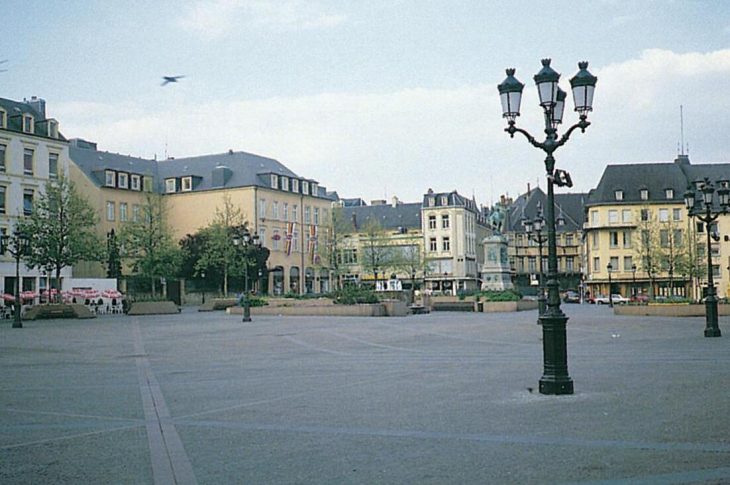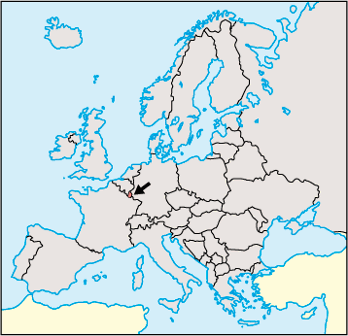What is the Capital of Luxembourg? Luxembourg

Capital City of Luxembourg: Luxembourg City
Luxembourg City, the capital of the Grand Duchy of Luxembourg, is a historic and vibrant city located in the heart of Western Europe. The city stands as both a political and financial hub, with a rich cultural heritage, modern architecture, and a blend of old-world charm and contemporary innovation. Over the centuries, Luxembourg City has served as a strategic stronghold and a center of governance, commerce, and culture.
City Overview
Luxembourg City, with its captivating blend of medieval fortifications and modern infrastructure, is a symbol of the country’s resilience and prosperity. As a UNESCO World Heritage site, it is celebrated for its historical sites, such as the Bock Casemates and the Grand Ducal Palace, as well as its cultural landmarks like the Luxembourg City History Museum.
City Facts
- Capital: Luxembourg City
- Country: Luxembourg
- Area: 51.46 km²
- Population: Approximately 125,000 (as of 2023)
- Time Zone: Central European Time (CET, UTC+1) during standard time, and Central European Summer Time (CEST, UTC+2) during daylight saving time.
- Highest Mountain: The highest point in Luxembourg City is the “Knuedler” hill, though the country’s highest peak, Kneiff, reaches an elevation of 560 meters, located in the region of the Oesling.
- Longest River: The Alzette River, which flows through the city, is the longest river in Luxembourg City and a central feature of the urban landscape.
Major Landmarks
Luxembourg City is home to a rich array of landmarks that reflect its long and diverse history. Below are some of the most notable landmarks in the city:
1. Bock Casemates
The Bock Casemates are a network of underground tunnels and fortifications that date back to the 17th century, initially constructed by the Spanish and later expanded by the French. These defensive structures are among the best-preserved fortifications in Europe and offer panoramic views of the city.
2. Grand Ducal Palace
The Grand Ducal Palace is the official residence of the Grand Duke of Luxembourg. Built in the early 1600s, the palace is an outstanding example of Renaissance architecture. The palace is located in the heart of the city and is still used by the Grand Ducal family for official functions.
3. Notre-Dame Cathedral
The Notre-Dame Cathedral, or Cathédrale Notre-Dame, is one of Luxembourg’s most important religious sites. It was built in the late 1600s in the Gothic style and later converted to a Baroque church. It houses the tomb of the Grand Duchess Charlotte and several beautiful chapels.
4. American Cementery Memorial
The American Cementery Memorial is dedicated to American soldiers who lost their lives during the Battle of the Bulge in World War II. Located in the Limpertsberg quarter of Luxembourg City, the cemetery is a poignant reminder of the city’s role in the liberation of Western Europe.
5. Luxembourg City History Museum
The Luxembourg City History Museum provides an in-depth look at the city’s development, from its medieval origins to its modern-day status as a European financial center. Exhibits include archaeological artifacts, historical documents, and multimedia displays.
6. European Institutions
As the seat of several European institutions, Luxembourg City is home to the European Court of Justice, the European Investment Bank, and the European Court of Auditors. These institutions contribute to the city’s international profile and its role in European integration.
Climate Overview
Luxembourg City experiences a temperate climate with four distinct seasons: mild winters, warm summers, and transitional spring and autumn periods. The climate is heavily influenced by its location in Western Europe, with moderate precipitation year-round and a significant amount of cloudy days.
Climate Table
Here is an overview of the average monthly temperature, precipitation, and number of sunny days in Luxembourg City:
| Month | Average Temperature (°C) | Average Precipitation (mm) | Average Sunny Days |
|---|---|---|---|
| January | 2.0 | 38 | 50 |
| February | 3.0 | 34 | 60 |
| March | 6.0 | 41 | 75 |
| April | 9.0 | 42 | 90 |
| May | 13.0 | 49 | 140 |
| June | 16.0 | 58 | 160 |
| July | 19.0 | 63 | 180 |
| August | 19.0 | 66 | 160 |
| September | 14.0 | 56 | 140 |
| October | 9.0 | 51 | 105 |
| November | 5.0 | 45 | 50 |
| December | 2.0 | 41 | 45 |
Other Capitals in Luxembourg’s History
Throughout its long history, Luxembourg has seen various cities serve as political and administrative capitals. Below are the key historical capitals of Luxembourg:
1. Arlon
- Period: 5th to 9th Century
- Description: Arlon, located in modern-day Belgium, was the capital of the early Luxembourg region during the Frankish period. It served as a central administrative hub during the Merovingian and Carolingian empires.
2. Echternach
- Period: 9th to 13th Century
- Description: The town of Echternach, located in the eastern part of Luxembourg, served as a key center of religion and governance during the medieval period. The Abbey of Echternach, founded in the 7th century, was a major influence in both spiritual and political matters.
3. Luxembourg City (Modern Period)
- Period: From the 13th Century to Present
- Description: Luxembourg City became the de facto capital of the Duchy of Luxembourg in the 13th century and has remained the capital to the present day. Its status as a fortified stronghold and central administrative hub helped cement its role as the capital of the Grand Duchy.
Country Facts
Luxembourg, officially the Grand Duchy of Luxembourg, is a small landlocked country bordered by Belgium, France, and Germany. Despite its size, Luxembourg plays a significant role in European and global affairs due to its economic strength, political stability, and active participation in international organizations.
Country Facts
- Population: Approximately 645,000 (as of 2023)
- Area: 2,586 square kilometers
- Largest City: Luxembourg City (with around 125,000 inhabitants)
- Currency: Euro (€)
- Official Language: Luxembourgish, French, and German (all three are official languages)
- ISO Country Codes: LU (Alpha-2), LUX (Alpha-3), LU (Numeric)
- Capital City: Luxembourg City
- Government Type: Constitutional Monarchy
- Head of State: Grand Duke of Luxembourg
- Independence: Luxembourg gained its independence in 1839 following the Treaty of London.
- International Organizations: Luxembourg is a founding member of the European Union, NATO, the United Nations, and the Benelux Union.














































